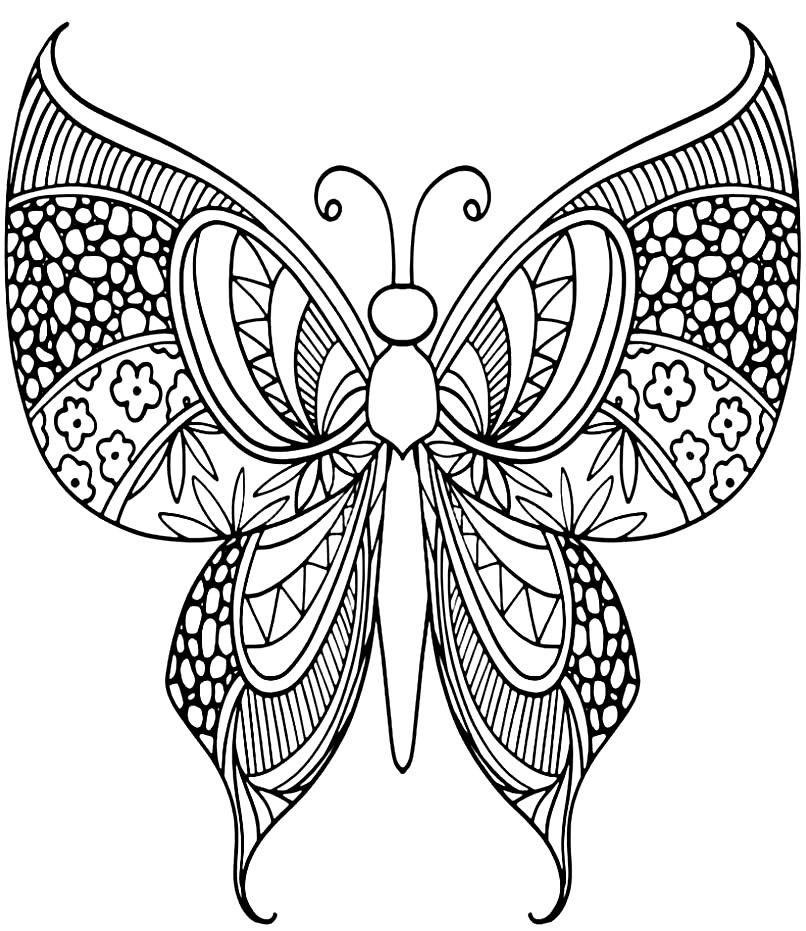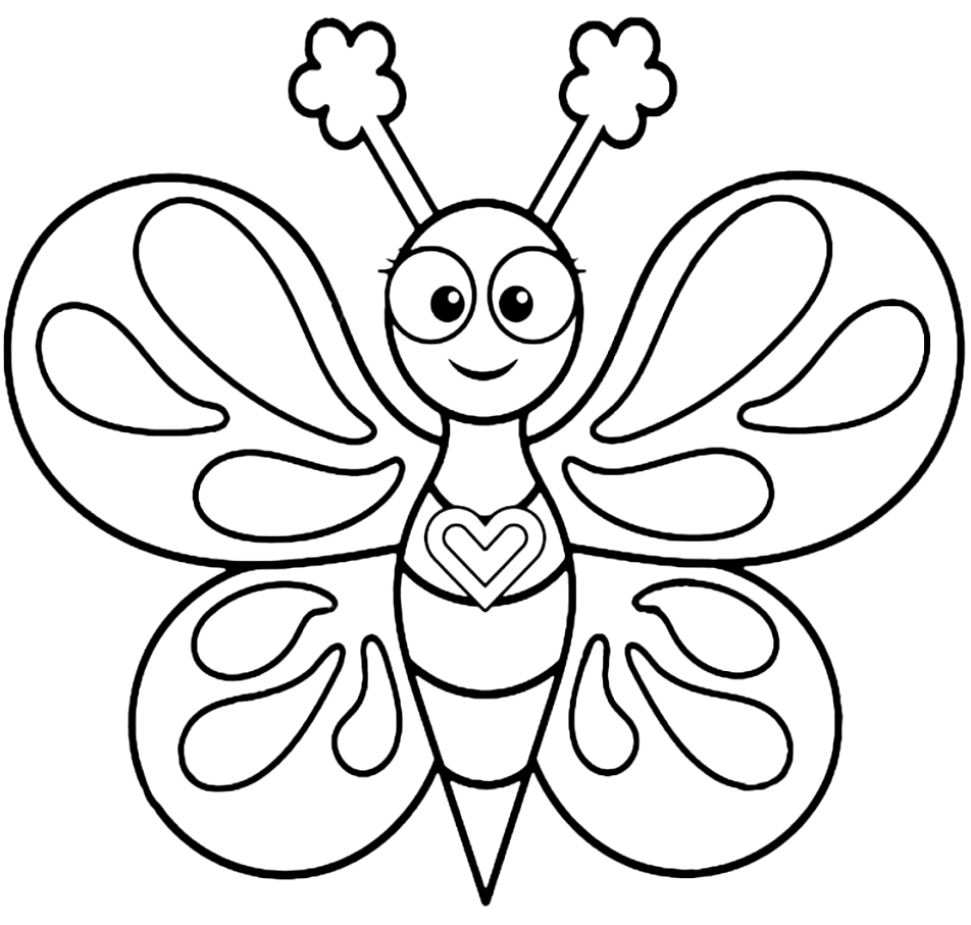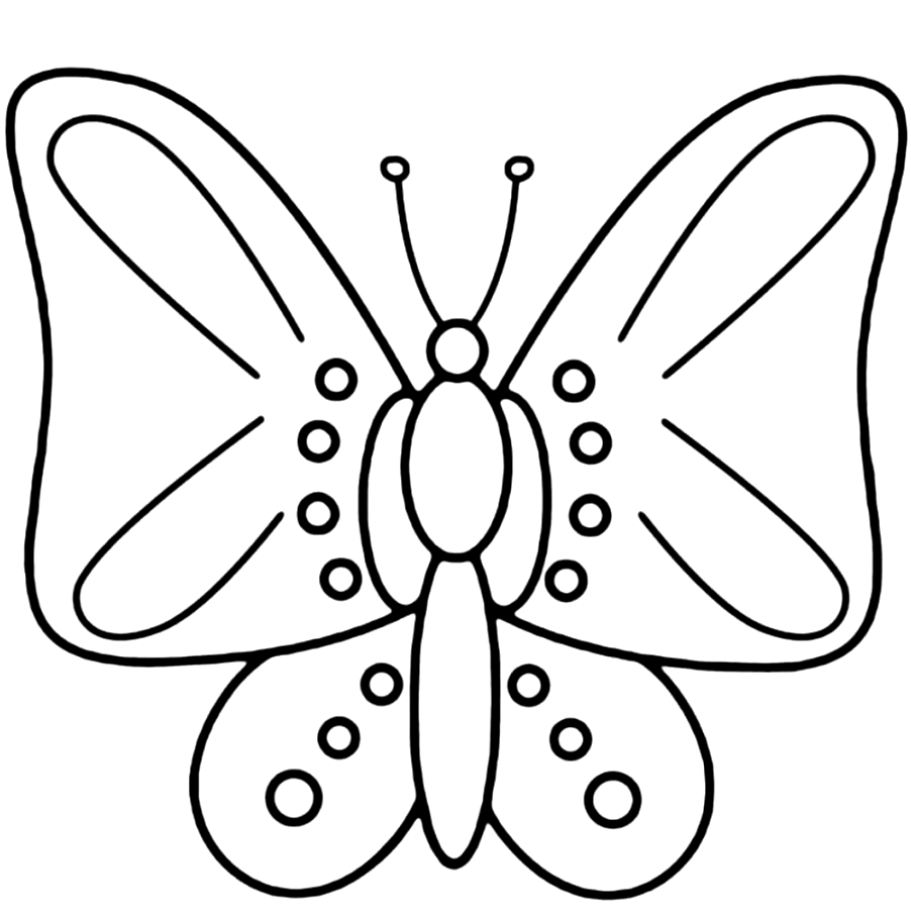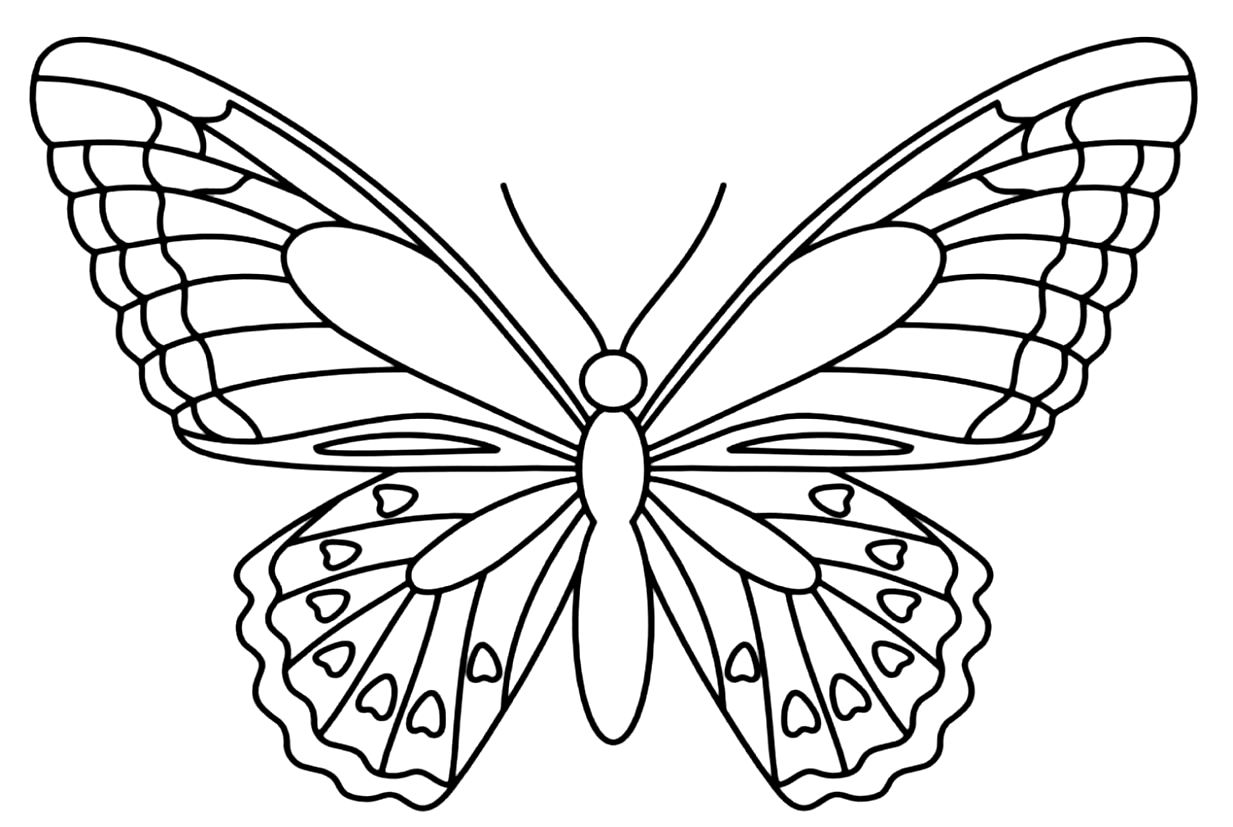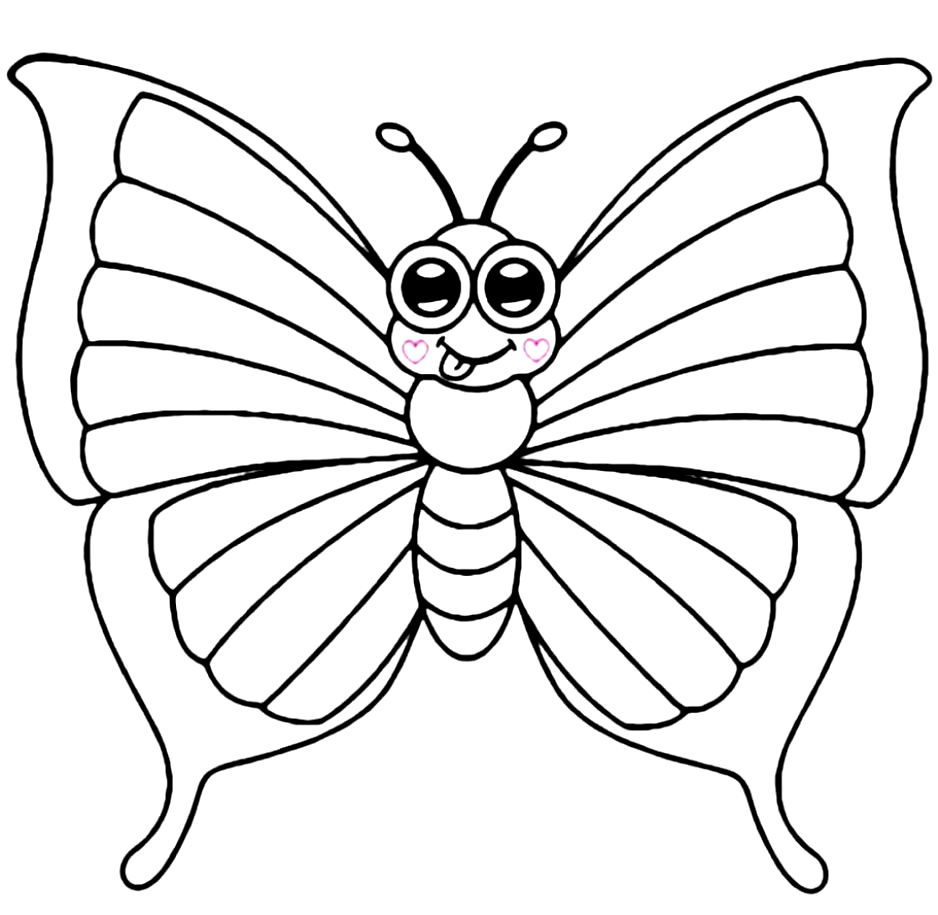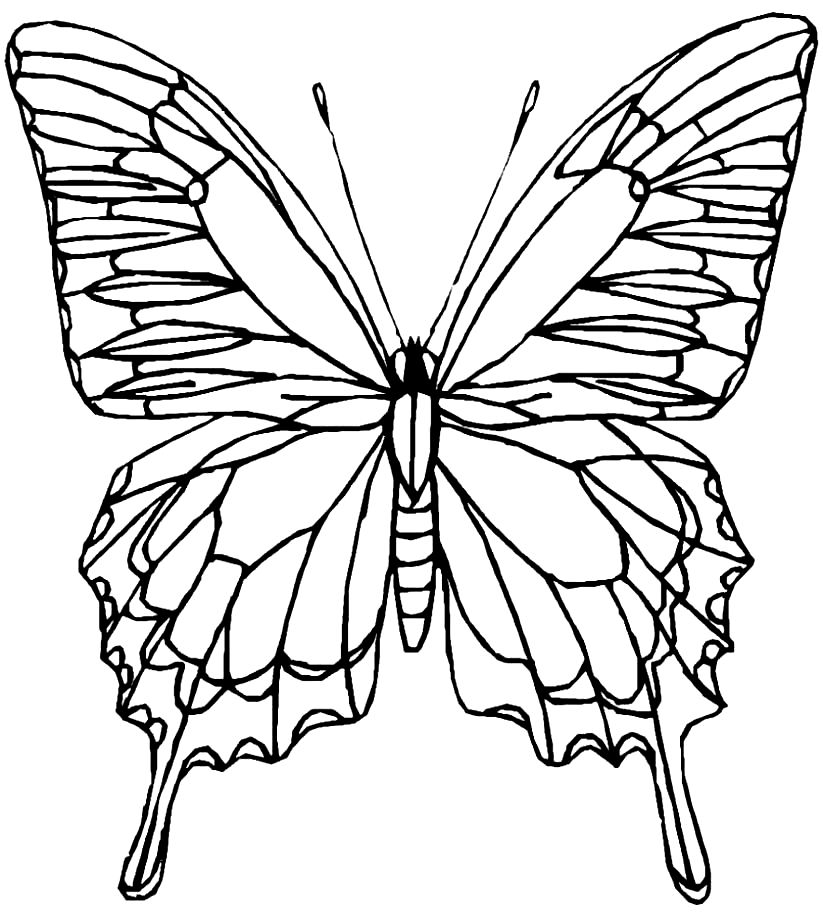Butterflies
Coloring pages featuring butterflies, the true ornament of nature, are quite impressive. Butterfly coloring page is very colorful, contains many colors and has a beautiful shape. Their big and flamboyant wings are their most important feature. One of the symbols of freedom and life, the butterfly is one of the most beautiful insects in nature. When working with these pages; You will need many coloring pencils such as red, purple, green, yellow, orange, burgundy. Now let's take a look at the butterfly coloring pages;
Butterflies coloring pages ( free printable)
It is known that there are a total of 150,000 species of butterflies on Earth. They feed on their proboscis, just like in bees. Their feeding systems work thanks to their proboscis, and they only consume pollen in flowers, that is, pollen. Although it is said that butterflies live only 1 day among the people, this is a false information. The lifespan of butterflies varies depending on the species. Some butterfly species are known to live up to one year.
There are two main parts in the structure of butterflies, consisting of the body and the wing. Their eyes are oval in shape, they are bulging, and they have color vision. It is mostly rodent and absorbent. Butterfly antennae are located on the front of the head. The length and structure of the antennae vary according to the species of butterflies.
Butterfly Species
Butterflies are divided into species depending on their wing structure and color. Here are some butterfly species and their characteristics:
- Attucas Atlas: The atlas butterfly is the largest butterfly in the world. It has this title because its wingspan can reach 28 centimeters from one end to the other and its wing area can reach 400 square centimeters. The patterns on its wings act as a defense mechanism against predators, as it resembles a cobra snake.
- Tongeia Minima: Discovered in 2002 in Shaanxi Province, China, the butterfly named Tongeia minima is the smallest butterfly in the world. The wingspan of this butterfly, which belongs to the family of Lasenids, is 12-17 mm. It is known that on August 27, 2007 it was officially registered as the smallest butterfly in the world.
- Cetosia Cyena: Cetosia Cyena is one of the species distributed in Malaysia and India. The wing structure has a lace appearance. It leaves a bad smell on the area it touches. Thus, it has created a mechanism that can protect itself.
- Paper Kite: Paper Kite is one of the butterfly species found in South East Asia. It has a wingspan of between 120 and 150 millimeters. The Turkish equivalent of his name means "flying paper". The reason for this is that it creates a floating image like paper while flying.
- Great Mormon: The Great Mormon butterfly species in South Asia attracts attention with its tail resembling a swallow wing. The wingspan varies between 130 and 160 millimeters.
- Parthenos Stlvia: It is distributed in areas such as Southeast Asia, Southern India, New Guinea and Sri Lanka. The wingspan varies between 45 and 50 millimeters. It has a smaller wingspan compared to other species
- Vindula Dejone: Vindula Dejone is one of the butterfly species found in the Philippines. It is also distributed in southeast Asia and Indonesia. The wingspan for the male species varies between 35 and 40 millimeters. In females, the wingspan varies between 41 and 45 millimeters. There are round patterns on the hind wings. Thanks to these patterns, it is possible to protect themselves by scaring the predators.
- Common Rose: Common Rose, which is widespread in India and Sri Lanka, is among the important butterfly species. The speckle patterns on its wings can be dark red or light brown. It got this name due to the prevalence of its red color. The Turkish equivalent of the name means "common rose". It has a wingspan of approximately 80 millimeters to 130 millimeters.
The Rare Butterfly Species
- Lange's metalmark butterfly
- Luzon peacock swallowtail (Luzon peacock swallowtail)
- Blue Morpho Butterfly (Morpho didius)
- Queen Alexandra's Birdwing (Queen Alexandra's Birdwing)
- Teinopalpus imperialis (Emperor of India) (Kaiser-i-Hind)
- Leona's Little Blue Butterfly
- Island Marble Butterfly (Euchloe ausonides insulana)
- Schaus' Swallowtail
- Zebra Longwing [Heliconius Charithonia (Zebra Longwing Butterfly)]
- Bhutan Glory (Bhutanitis lidderdalii)
Butterflies are flying insects with beautiful large scaly wings, six jointed legs, three segmented bodies, a pair of antennae, compound eyes, and an exoskeleton. The body of the butterfly, which is covered with tiny sensory hairs, consists of three parts: head, thorax and abdomen (tail tip). It has four wings and six legs attached to its body and has muscles in its chest that can move them.
Butterflies with wings with many beautiful patterns can fly only if their body temperature is above 86 degrees. We must also explain that butterflies and moths are the only insects with scaly wings.
Butterflies appear as a name given to members of the squid. Their bodies are very sensitive and break in the event of a jolt. It is among those known to have around 165 thousand species. Also, another interesting piece of information is that females of some species do not have wings. Its colorful wings look great aesthetically. Wing sizes vary according to the existing type.
The period in the cocoon definitely deserves to be known. Because this curious waiting is quite different in that it is a harbinger of real change. During this period inside the cocoon, a creature that tears its shell and has a colorful shape and looks aesthetically wonderful will emerge.
However, there is a fact that a butterfly coming out of the cocoon does not mean that it can fly immediately. In other words, the vascular structure in the wings must first be filled with blood. In other words, it takes a certain period of time for this vascular structure to gain strength.
The working conditions of butterflies also vary according to their activity status. In other words, while night butterflies have thicker and heavier body lines, daytime butterflies rest at night and begin to fly during the day. But of course, nocturnal butterflies have hearing and smell, etc. Its organs are very sensitive and it would not be wrong to say that the males of some species can smell a female from miles away.
As for the reproduction of butterflies, the reproduction process takes place with eggs. Females lay their eggs on tree bark. As many people know, the larvae that emerge from the eggs are called "caterpillars". When summer comes, it comes out of its shell and starts looking for food. Caterpillars have three pairs of eyes and their mouths are miraculously covered with glands.
In addition, it should not be forgotten that some butterflies are poisonous and they have a very striking appearance. They fly very slowly and many animals do not want to eat them. In addition, non-poisonous butterflies take many different forms to protect themselves from their enemies and continue to survive in this way.


